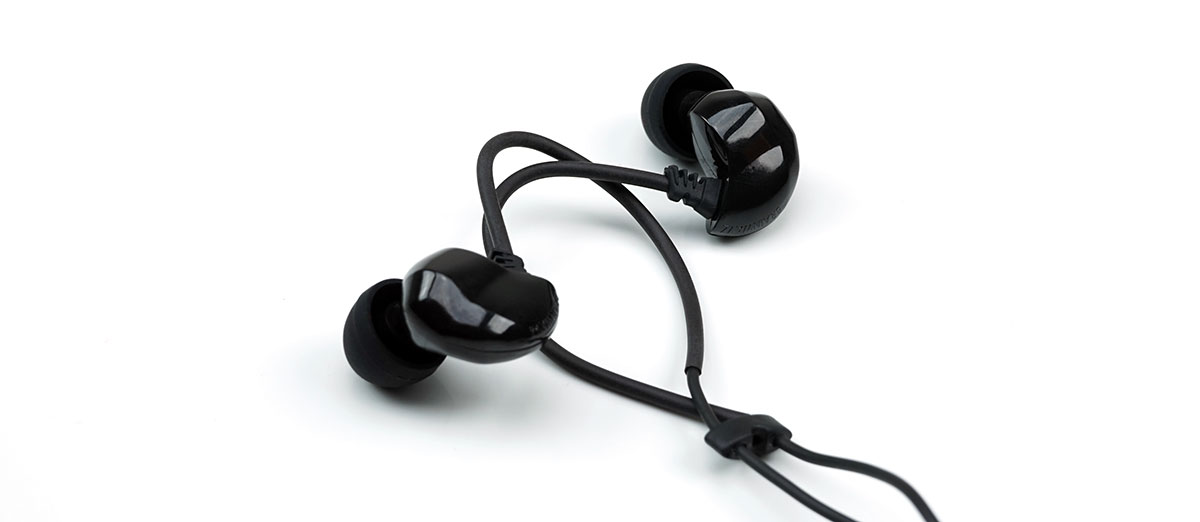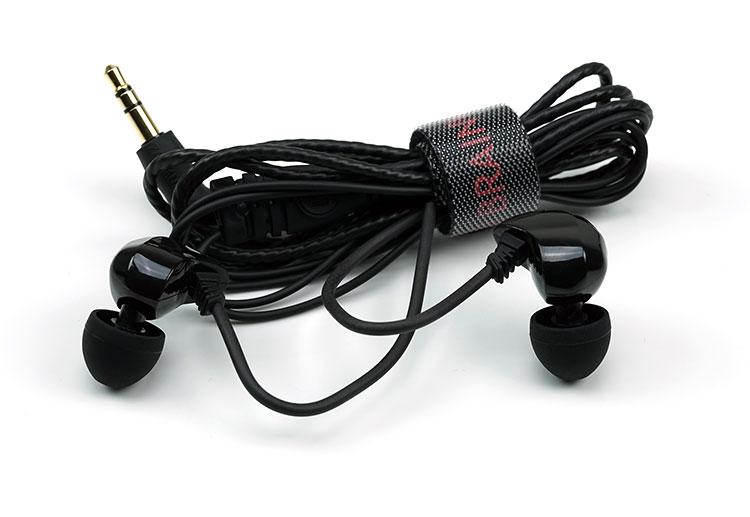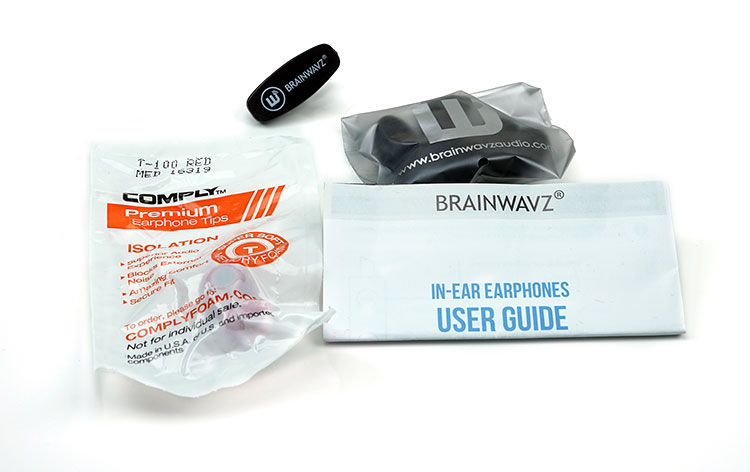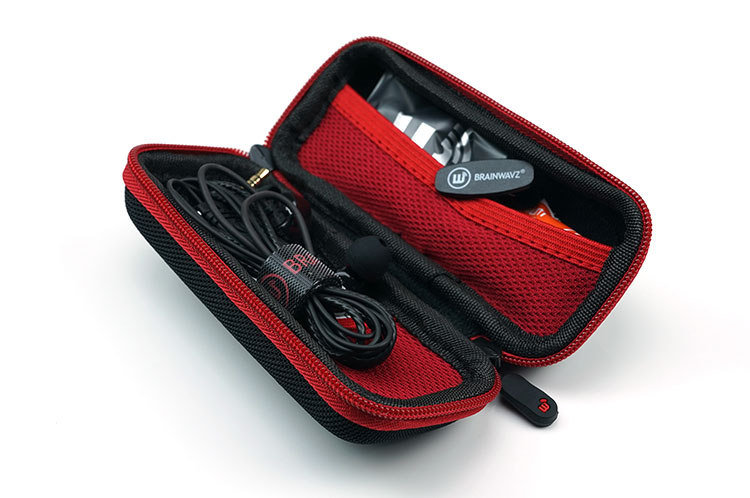Brainwavz to date has been a popular budget-friendly consumer IEM and headphone manufacturer for as long as I can remember.
We have a fairly healthy review coverage of Brainwavz over the last few years and they do have a fairly pro-active approach to reviewing which does help. I have not as yet heard their new B100 and B150 single BA IEM’s but by all accounts, they seem to be a step up on previous efforts.
The B200 was the last line in an email from Brainwavz on review options (kind of like the Steve Job’s “And one last thing” moment) and priced at $199 and using a dual BA design it immediately grabbed my audiophile interest.
In deference to their previous consumer line, I simply was not expecting this new audiophile pitch.
What Is The Pitch?
Mid-fi
The B200 is Brainwavz’s strongest pitch yet for the mid-fi audiophile market audience. At $200 and sporting a dual BA design, this really can no longer be considered a bang-for-buck budget release. This is pitching squarely against the likes of the Noble X, RHA’s new CL750, TFZ Balance 2M and many more ambitious projects all vying for your hard earned mid-fi bucks.
Tonal Pitch
The second key pitch from Brainwavz is the marketing of the B200 as a relatively uncolored and balanced BA sound. Those with the glass half empty will define that as a bland sound signature designed to be inoffensive and free from ugly reactions. Those with the glass half full will welcome an IEM at this price point that could be free of ugly FR tweaks, peaky highs, and uneven bass responses.
It has been a while since I heard a straight down the line BA type sound and if they are true to their word then the lack of coloration will definitely appeal more to audiophile sensibilities than previous releases.
Build
The B200 is a fairly lightweight plastic mold with a contoured design but otherwise, tends to follow in the footsteps of Westone with its low profile form factor purposed to fit snugly in your ear.
Series Design
It is the same design used on the B100 and B150 with a half moon crescent type shape and non-detachable but fairly robust cable exit at the top. Like the lower-tier units, the Brainwavz logo is subtly etched into the rear of the otherwise flush plastic housing. The B200 is engineered to be worn primarily as an over-the-ear IEM so the flow of the cable stem will not lend itself well to straight down use.
Nozzle
The B200 has a fairly short and narrow nozzle and uses a T-100 Comply Foam size fitting which is about as small as it gets. The nozzle is pushed slightly forward though with the extended drop down design of the rear of the housing but otherwise, the tips you use will play a large role in the comfort and seal you get with the B200.
Cables
OFC
The BA200 uses a non-detachable 1.3m OFC copper wire with a rubberized outer coating which has a certain flyaway quality to it and a little bit of memory retention but otherwise doesn’t get terribly tangled up during usage. Brainwavz has supplied a velcro strap also to assist with cable control after use which does help.
Strain Relief & Hooks
Since it is non-detachable the strain relief on the B200 is reasonably sturdy if a little short on the driver housing and feeds into low profile memory hooks (heat wrapped). The hooks have decent memory retention to them so they should not pose an issue in terms of shaping to your ear and they are also not that thick either so they shouldn’t present a challenge to glasses users.
Terminations & Splits
The cable is terminated with a durable looking right angle 3.5mm gold plated stereo jack encases in a solid strain relief that is reasonably flexible at the same time. The cable also has a heavy duty y-splitter rubber tubing and adjustable chin strap. Strain relief is very good on the bottom of the y-split but I would have liked to have seen a bit more at the top as the cable thins out into the right and left channels.
Comfort
I have to give props to Brainwavz for the design of the B200 as they fit wonderfully in my ear. Combined with its complete lack of weight they are by far their most comfortable IEM to date and definitely rival the likes of Westone entry-level designs.
The fit is not quite flush with my outer ear, the slight curvature of the shell can be felt when you run your fingers across your earlobe but its minuscule by comparison to some of the competing designs out there such as the Noble X’s deeper and heavy chassis.
Seal
The B200 seal is entirely dependent on the tips used but thankfully Brainwavz does provide a wide range of tips for use with the B200 with 6 sets of silicone in various sizes and one set of red T-100 Comply foams in medium size.
The single bore silicone will not seal quite as well as the foam tips but will give a slightly cleaner tonal edge to the presentation than the Comply’s. Personally, I am ok with that given my preference for the excellent passive noise isolation that the T-100’s give me.
Accessories & Packaging
Whilst the retail box of the B200 is fairly mundane the same cannot be said of the accessories list inside including their new barrel type carry case. I actually really like the new case that comes with the B200. It has bags of space for tips and the earphones with 1-2 discreet pockets to hold everything.
The case is also well finished in terms of color and materials used and the long barrel shape turns out to be much more pocket-friendly than the older flatter but wider pill box cases.
Apart from the hard case, Brainwavz has included a shirt clip, velcro strap for the cable as well as tips in the following sizes:
- 3 x single silicone bore tips in small, medium and large
- 1 x Comply T-100 foam tips in medium size (Red)
As mentioned my preference was for the foam tips for the general levels of comfort and the superior passive noise isolation and as such the majority of the review was done with those tips.
Sound Impressions
Tonality
The B200 has a relatively ‘neutral to natural’ smooth sounding presentation with a slight mid-bass emphasis in its low-end but nothing dramatic, a neutral and fairly flat midrange with an elevated upper mid section as well as relaxed and smooth treble that lacks a little in extension and energy. Use of silicone tips will enhance the sub-bass extension and mid-bass a little more but will leave less room for the mids. My personal preference is a clear and forward mid-performance with strong vocals so naturally, the foam tips stayed on.
Mid-Centric
It’s a fairly typical dual BA presentation with roll off on both ends of FR but with good resolution and a nice turn of pace for everything in-between. The bump in the mids though will give it a slightly mid-centric focus with a particular emphasis on a slightly forward vocal response.
Presentation & Detail
Presentation wise the B200 delivers a more intimate presentation than you would find on a hybrid or dynamic driver IEM though imaging for me is accurate and spatial cue awareness is very good. One thing I do like about the B200 is the level of resolution and something generally speaking BA implementations are very good at this. The only area lacking is in the final octave where its drops off but otherwise, the micro-detail on the B200 is above average.
Bass
Bass on the B200 is mid-bass focused with a gentle 100Hz rise that stays fairly linear until around 300Hz before dropping off to a fairly neutral lower midrange. Sub-Bass presence is much lower though with a roll-off sub-100Hz which is slightly more pronounced using the foam tips than the silicone variants. Bass decay is tight with a smooth attack and short decay so it does have a slightly dry edge to it though it never sounds terribly abbreviated.
The pace of the bass from the B200 is very good actually, something which a decent BA IEM normally displays, it just lacks a little bit of power, especially for instrumental fundamentals which sound fairly neutral and lacking in impact as a result.
Mids
Mids on the B200 are generally neutral but with a fairly marked boost in the 2-3k region giving higher pitched vocals a little lift and injecting some space and separation between the instrumental positioning which is slightly behind and the vocal presence which is more forward in nature. Instrumental timbre is smooth but neutral as is the B200 note body in general which isn’t overly rich or wet but doesn’t sound thin or brittle either.
Vocals are more full-blooded with that upturn in energy post 1-2k though this tends to benefit higher pitched vocal work than anything below say a natural tenor pitch. Contralto upwards will definitely stand out a bit as do percussion passages though again the B200 demonstrates a surprisingly good level of upper harmonic control so it won’t grate or sound harsh even if the source track brings plenty of energy to that specific area.
Treble
Treble on the B200 is a smooth and natural sounding but with a gradual roll off stopping off with a small plateau around 5-7k and again a fairly typical ‘hi-fidelity’ bump just post-10k. Lower treble has a bit more energy than its brilliance region so it lacks a bit of air and articulation in the final octave but not enough to send the B200 into a dark corner.
I am going to presume that boosting the second driver would have produced a peaky and thin sounding timbre to the B200 so rather than inject too much energy and stretching it they decided to just roll it back a little for a more forgiving sound. Truth be told it works and there is decent detail though those who like a little more perceived clarity and sparkle in their top end may find the B200 lacking.
Page 2: Comparisons & Matchability








